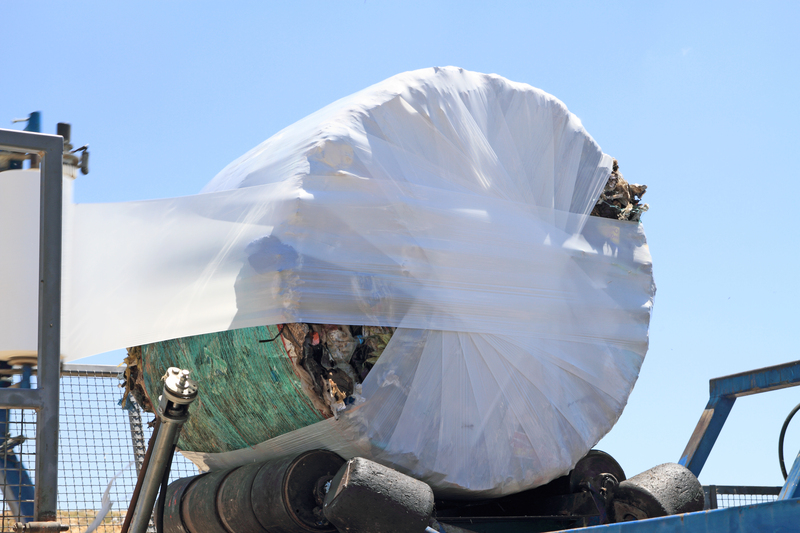
Innovative Ways to Combat Microplastic Pollution
Microplastic pollution has emerged as one of the most pressing environmental challenges of our time. These tiny plastic particles, often less than 5mm in diameter, are prevalent in oceans, rivers, and even in the atmosphere. They pose significant threats to wildlife, ecosystems, and human health. The need for innovative solutions to address this issue has never been more urgent. In this article, we explore some of the most promising strategies to combat microplastic pollution.
Understanding Microplastic Pollution
Microplastics originate from a variety of sources, ranging from the breakdown of larger plastic items to synthetic fibers from clothing. They are not only found in marine environments but also in soil and atmospheric dust. The persistent nature and widespread distribution of microplastics make it a complex problem to tackle.
The Impact of Microplastics
Before delving into solutions, it is crucial to understand the dire consequences of microplastic pollution. Research has shown microplastics can harm marine life when ingested, causing internal injuries and starvation. Furthermore, they can act as vectors for harmful chemicals and pathogens, amplifying their environmental impact.
Innovative Solutions to Reduce Microplastic Pollution
1. Advanced Wastewater Treatment
One of the primary pathways for microplastics to enter water bodies is through wastewater. Advanced wastewater treatment technologies have been developed to target microplastic filtration. Using fine membrane filtration systems and novel sedimentation techniques, treatment facilities can significantly reduce the amount of microplastics discharged into the environment.
2. Biodegradable Alternatives to Plastics
The development and adoption of biodegradable materials offer a promising avenue to reduce microplastic generation. By replacing conventional plastics with biodegradable alternatives in products such as packaging and textiles, we can diminish the input of microplastics into the environment.
3. Capturing Microplastics in Oceans
Several innovative projects focus on ocean clean-up efforts to capture and remove microplastics. Initiatives such as The Ocean Cleanup use advanced technology to collect microplastics from ocean gyres. Their systems are designed to target both macro and microplastics, making significant contributions to reducing pollution in the ocean.
4. Collaborative Research and Policy Development
Addressing microplastic pollution requires a multidisciplinary approach. Collaborative efforts between scientists, policymakers, and industry can drive the development of effective regulations and standards aimed at minimizing plastic waste. By aligning research priorities with policy-making, we can achieve sustainable progress in combatting microplastic pollution.
5. Education and Consumer Behavior
Empowering consumers with knowledge about the impacts of microplastics is essential for driving change. Educational campaigns highlighting the importance of reducing plastic use and improving waste management practices can lead to more informed consumer choices. A shift in lifestyle and purchasing habits can result in a significant reduction in microplastic generation.
Technological Advancements in Microplastic Detection and Removal
1. Innovations in Detection Technologies
Accurate detection of microplastics is crucial to understanding their distribution and impact. Advances in spectroscopy and chemical fingerprinting technologies have improved our ability to identify and quantify microplastics in various environments. These methods allow for more precise monitoring, enabling targeted interventions.
2. Novel Filtration Mechanisms
The development of novel filtration mechanisms, such as nanofiber filters and adsorption materials, has enhanced the selectivity and efficiency of microplastic removal from water sources. These technologies can be integrated into existing water treatment infrastructures, offering scalable solutions to microplastic pollution.
The Role of Policy and Legislation
1. Single-Use Plastic Bans
Governments worldwide are implementing bans on single-use plastics to reduce microplastic pollution at its source. Policies targeting items such as plastic bags, straws, and cutlery are crucial steps toward minimizing the input of microplastics into the environment.
2. Strengthening Recycling Systems
Improving recycling systems can substantially reduce plastic waste. Investment in infrastructure to enhance the collection, sorting, and processing of recyclables is essential for closing the loop on plastic materials and reducing the amount of plastic entering natural ecosystems.
Community Engagement and Action
Community-led initiatives play a crucial role in combatting microplastic pollution. Local beach clean-ups, educational workshops, and citizen science projects raise awareness and foster a collective sense of responsibility. Empowering communities to take an active role in plastic reduction efforts can lead to meaningful and lasting change.
Final Thoughts
The battle against microplastic pollution requires a comprehensive approach, integrating innovative technologies, policy measures, and public engagement. By adopting a multifaceted strategy, we can address the sources and impacts of microplastics and pave the way towards a healthier and more sustainable future. Every step we take towards reducing microplastic pollution is a step towards a cleaner planet.
By leveraging these innovative solutions and strategies, we can make significant progress in mitigating the impacts of microplastic pollution and preserving our planet's ecosystems for future generations.